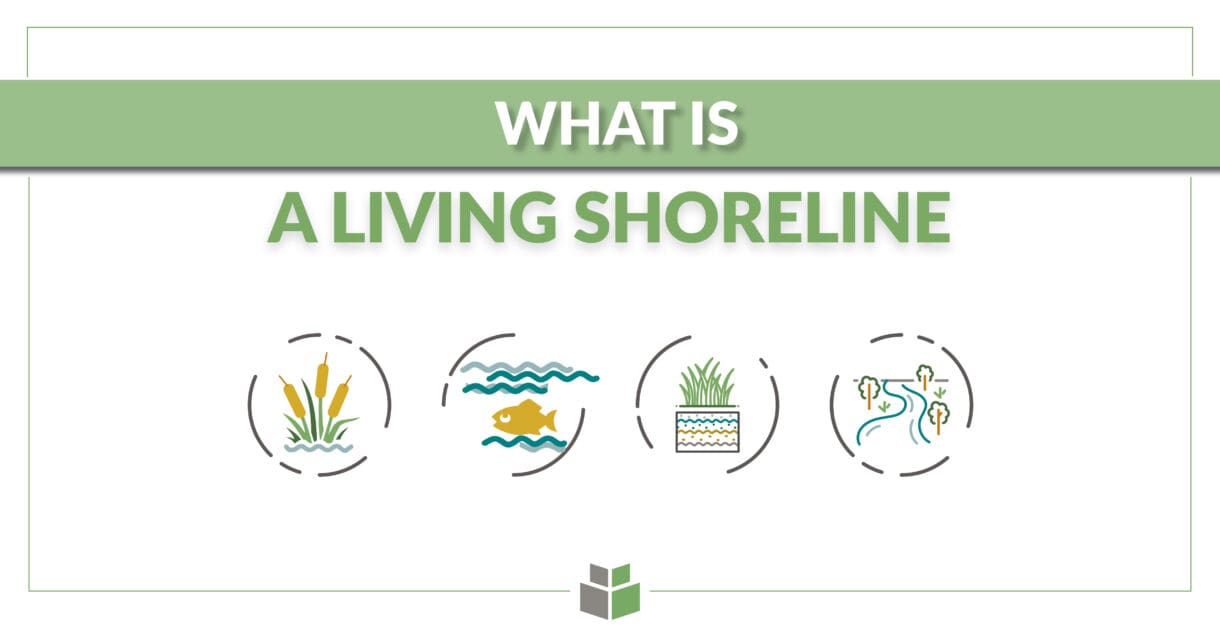
A living shoreline is a shoreline management practice that uses native vegetation, natural elements (like oyster shells, sand, and wood), and low-impact engineered structures to protect coastlines from erosion while enhancing the surrounding ecosystem. Unlike traditional “gray” infrastructure like seawalls or bulkheads, living shorelines work with nature rather than against it, preserving the natural connections between land and water.
According to the National Oceanic and Atmospheric Administration (NOAA), “living shorelines connect the land and water to stabilize shorelines, reduce erosion, and provide valuable habitat that enhances coastal resilience.” They are particularly effective in low to moderate wave energy environments but can also be adapted to higher-energy settings through hybrid living shorelines, which incorporate structural components such as stone sills or offshore breakwaters to dampen wave energy without compromising habitat value.
Benefits of Living Shorelines
Living shorelines offer a multitude of environmental, social, and economic benefits:
- Erosion Control: Plant root systems stabilize soil and reduce shoreline loss.
- Storm Resilience: Natural buffers reduce the impact of waves and storm surge, protecting inland properties.
- Water Quality Improvement: Vegetated buffers filter pollutants and sediment from runoff before it enters the water.
- Habitat Creation: Native plants and natural materials provide essential habitat for fish, birds, and pollinators.
- Cost-Effective: Living shorelines often cost less to build and maintain than bulkheads or seawalls.
- Aesthetic & Recreational Value: These green solutions enhance property views, provide access to water, and support activities like fishing and birdwatching.
Applications in High-Energy Coastal Environments
While originally designed for calmer waters, living shorelines are evolving. In high-energy zones, such as open coasts or large estuaries, hybrid systems are increasingly used. These may incorporate imported rock, reef structures, or other engineered elements that absorb wave energy while allowing for natural processes and wildlife movement. The North Carolina Department of Environmental Quality (NCDEQ) provides guidance and permits for these advanced shoreline solutions.
Stream Restoration
The principles behind living shorelines also extend inland. Many environmental services firms apply similar techniques for stream restoration and riparian buffer enhancement. By stabilizing streambanks and restoring native vegetation, communities can prevent erosion, improve aquatic habitats, and support cleaner waterways far from the coast.
How WithersRavenel Supports These Projects
At WithersRavenel, our environmental and engineering experts help local governments, private property owners, and non-profits design, permit, and construct living shorelines tailored to each site’s unique conditions. We conduct site analyses, model wave action, assess ecological value, and help clients navigate complex regulatory processes to ensure project success.
Whether you’re protecting an estuarine marsh, restoring a riverbank, or future-proofing a coastal community, our multidisciplinary approach ensures your shoreline is stable, sustainable, and resilient for generations to come.
Ready to Start Your Project?
Learn more about how WithersRavenel’s Environmental Services and Living Shoreline expertise can help you build a better, greener shoreline. Contact us today to discuss how a living shoreline can enhance your coastal ecosystem while protecting your property and community.
